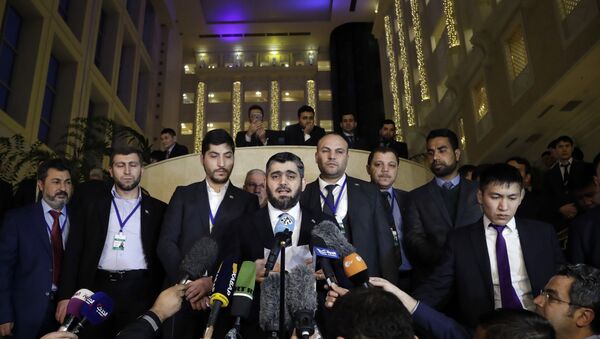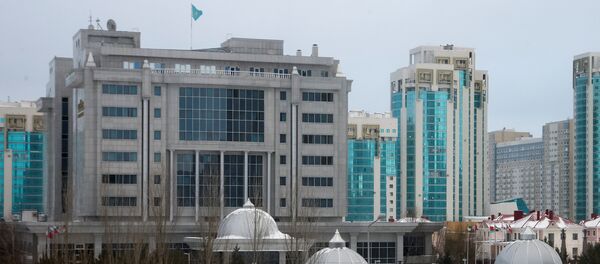ASTANA (Sputnik) – Despite the objections of the Syrian military opposition concerning Iran's role, which were mentioned by Alloush, the decision on the establishment of the joint Russia-Turkey-Iran group on ceasefire monitoring was taken and confirmed by the corresponding document.
"We have confirmed the creation of a commission which would bring together the Turkish side and Russia, the Arab group will play a big role in this commission. This Arab group will comprise Saudi Arabia, Jordan, Qatar and the United Arab Emirates. We do not accept Iran’s role. There was no agreement reached on this," Alloush told a press conference.
"We also discussed mechanisms to establish control over the ceasefire regime. Russia mentioned a brief document in response to the document that we presented," Alloush said at a press conference.
Russia has confirmed the intention to send the Syrian armed opposition via Turkey a schedule of lifting the siege of Syria's town of East Ghouta, he said.
"The Russian side has confirmed the intention to send us a schedule of lifting the siege of Ghouta and to establish mechanisms on implementing this task, and that this document will be submitted to us via Turkey as a guarantor."
"Regarding the prisons, they [Russia] offered to use the mechanism to release prisoners… Russia has offered to give us the names of 100 prisoners that will be released. We talked about 10,000, while this is just 100. This measure appears illogical but we will look into this, we will reply officially and we will support everyone's release," Alloush said.
The second round of Astana talks was held in Kazakhstan's capital on February 15-16. On Wednesday, Russian, Iranian, Jordanian and Syrian delegations held a number of technical meetings.
The first round of Astana talks on Syrian crisis settlement brought together the representatives of the Syrian government and the armed opposition groups for the first time in the six years of the Syrian war. As a result of the talks, Russia, Iran and Turkey agreed to establish a trilateral mechanism to monitor the ceasefire that came into effect on December 30, 2016.



